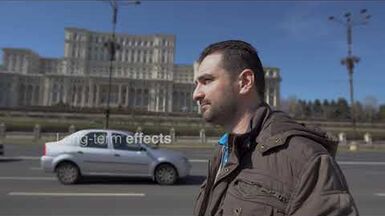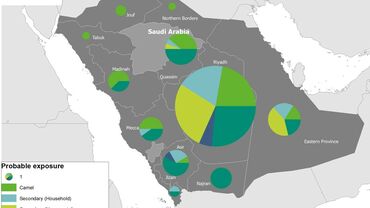Epidemiological update: Middle East respiratory syndrome coronavirus (MERS-CoV)
Since the last epidemiological update published by ECDC on 12 June 2015, 24 additional cases and six deaths in previously reported cases have been reported by South Korean authorities.
South Korea and China
On 20 May 2015, the South Korean Centres for Disease Control and Prevention reported a case of MERS-CoV in a 68-year-old man, with recent travel history to the Middle East. According to WHO, the man had travelled to Bahrain (18–29 April), the United Arab Emirates (29–30 April), Bahrain (30 April–1 May), Saudi Arabia (1–2 May), Bahrain (2 May) and Qatar (2–3 May). The case arrived at Korea’s Incheon international airport via Qatar on 4 May and was asymptomatic on arrival. On 11 May, he developed cough and fever, and sought medical care at an outpatient clinic between 12 and 15 May. He was hospitalised on 15 May, discharged on 17 May and readmitted the same evening in another hospital after presenting to the emergency department. On 20 May, he tested positive for MERS-CoV and was transferred to the nationally designated treatment facility for isolation. The patient has no history of exposure to known risk factors in the 14 days prior to detection. Investigation of the source of infection is ongoing[1].
Since the last epidemiological update published by ECDC on 12 June 2015, 24 additional cases and six deaths in previously reported cases have been reported by South Korean Authorities. As of 15 June, the number of cases reported in South Korea is 149, including 16 deaths. One non-fatal case has been reported in China. The case in China is the son of a patient admitted in South Korea who travelled to Hong Kong, Guangdong province, China, on 26 May 2015. He was admitted and isolated in a hospital in Hong Kong on 27 May 2015. This patient was confirmed positive for MERS-CoV infection on 29 May[2].
For the 150 cases reported in East Asia, the onset dates range from 11 May for the index case, until 10 June for the most recent cases, according to the Korean Centres for Disease Prevention and Control. The sex distribution for the 150 cases is 91 males and 59 females (M/F sex ratio of 1.5, figure 2) and the median age is 56 years, ranging from 16 to 87 years.
Of the 150 cases, 16 have died and 14 have recovered and been discharged from the hospital. Of the remaining 120 patients, 103 are in a stable condition and 17 are in a critical condition, according to the South Korean health authorities. Among the 16 reported deaths, the median age was 71.5 years, ranging from 57 to 82 years. All cases reported in East Asia are linked to healthcare facilities and were either a patient (47%), a visitor (36%), a healthcare worker or other healthcare staff member (17%). No community-acquired MERS-CoV infection has been reported. According to the Korean Centres for Disease Prevention and Control, 12 medical facilities reported confirmed cases in South Korea (figure 1).
One suspected case of MERS-CoV reported by Slovak authorities on 13 June tested negative on 15 June.
Distribution of confirmed cases of MERS-CoV by date of onset* and hospital of admission, 11 May–15 June 2015, South Korea (n=150)
*If the date of onset is unknown, date of reporting has been used.
Distribution of confirmed cases of MERS-CoV by age and gender, 11 May–15 June 2015, South Korea and China (n=150)
References
- World Health Organization. Middle East respiratory syndrome coronavirus (MERS-CoV) – Republic of Korea [Internet]. 2015 [updated 24 May 2015].
- Korean Centers for Disease Control and Prevention. MERS-CoV overview [Internet]. 2015 [updated 28 May 2015].







